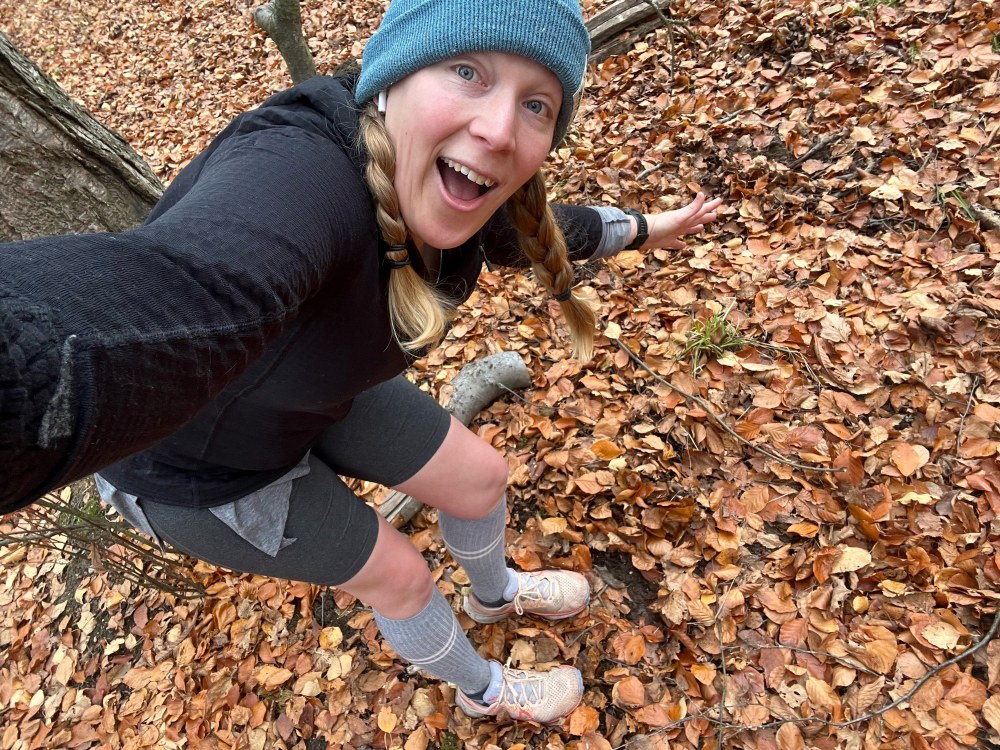
Who gives socks as a holiday gift? Runners do, and mountaineers should too. Grandparents aren’t the only ones to tell you, there’s nothing like a good compression sock. If you are looking for the perfect gift this holiday season, compression socks are it. I’ve thoroughly tested the limits of my compression socks and highly recommend giving a pair to the runner, climber, or mountaineer in your life.
Why Mountaineers Should Embrace the Compression Sock
I am a trail runner and mountaineer. In 2021, I ran my first 100-mile ultramarathon. After 60 miles, my legs were so swollen that it was hard to walk and my feet barely fit into my shoes. I was in agony. When I asked around, the universal recommendation was to invest in compression socks. Now, I never leave home without them. When mountaineering, I like to use compression socks as a base layer, covered by my heavy wool socks, silk leggings, and finally my bulky, three-season climbing boots.
Ultra-runners and road runners have embraced the compression sock as a necessary staple, and mountaineers should, too. Compression socks are a great tool for mountaineers because they improve circulation and prevent the buildup of excess fluids. Miles of post-holing and kick-stepping puts a lot of pressure on your lower legs and feet. Compression socks help maintain blood flow, lessening the swelling in your feet, keeping oxygenated blood flowing to your lower extremities, and decreasing the feeling of “led legs.”
I experienced this firsthand while climbing the Emmons route of Rainier in 2023. Despite the glacial cold of an 11pm summit start, my toes stayed at a comfortable temperature all day. I did not experience any lower leg swelling – a common complaint among the other climbers – and my boots fit each morning without needing to accommodate swollen feet from a night of sleeping at 10,000ft.
I also credit my compression socks with lessening the effects of altitude as we climbed above 14,000ft. I did not experience the lightheadedness or shortness of breath that many climbers struggle with at altitudes above 8,000ft. Of course, my training contributed greatly in warding off these effects, but my socks were a crucial part of my gear.
Finding the Right Pair
If you’re searching for a gift, a pair of compression socks won't go amiss. Here are a few tips for choosing the right pair:
Shop ethically
I have tried a couple of types and brands of compression sock. My favorites are Bombas. They come in a great selection of colors and fashions, and they donate a pair of socks for every pair sold. They also have a great return policy.
Choose compression level according to activity
A pair of “high/Performance” compression socks (20-30mmHg on the Bombas website) will offer the most support, but they might be too tight for a first-time user. Aim for a “medium/Every Day” (15-20mmHg) compression level as an introductory pair. If your gift is a hit, they can always order something with more compression later. My experience is that the “low” compression socks (8-15mmHg on Amazon) are minimally beneficial for running and climbing. They tend to lose their compressing effect after a few washes.
Material matters
I prefer compression socks that are a synthetic blend with less than 10% cotton. Different companies offer different material blends. Most runners and mountaineers avoid cotton if possible, as it doesn’t wick moisture well and can make your feet colder when wet. Wool is another common compression sock material that dries quickly and regulates foot temperature well.
Choose the right size
If you choose a size that is too big, you lose some compression. If you go too small, the sock is impossible to get into. As a 5”5’ tall woman with a size 10.5 shoe, I go for a men's size medium sock. A women's large fits, but they are a bit too tight for me. Even though the men’s sizes are slightly too tall in the calf, I found the socks to fit my feet better. Be adventurous and shop between the men's and women’s sections for the best selection.
When to Wear Compression Socks
I use my compression socks for mountaineering, running, and long travel days. I recommend putting compression socks on early, so you don't have to struggle at the trailhead. I've experienced the best results when I put compression socks on right after I wake up and keep them on until the activity is done. Wearing the same socks for days at a time might sound gross, but it makes such a huge difference that I am loath to take them off. Smelly feet are the least of my problems when I am lugging 45lbs of gear up the side of a volcano or running for 30 hours without sleep.
Compression socks have been a game changer for my ultra-running and mountaineering. Take my advice, and give your loved ones the gift of compression socks this season.
Add a comment
Log in to add comments.Thank you. It helps me to go Machu Pichu, Peru and Enchantment, WA
 Kelsey Hoffman
Kelsey Hoffman